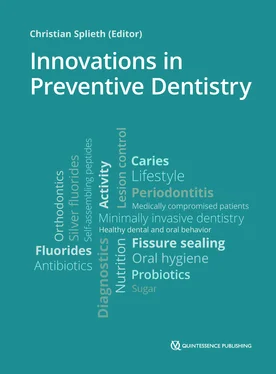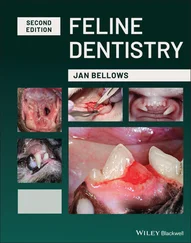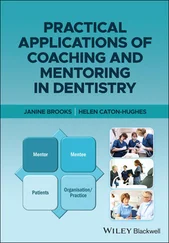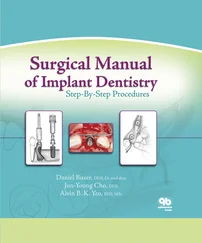The immune response to the periodontal bacteria is different for each individuum and impairs the composition of the bacterial biofilm differentiating from a symbiotic into a dysbiotic composition. 13The change of the relative abundance of pathogenic microorganisms when compared to their abundance in a healthy state leads to alterations within the host-microbial interactions that can further accelerate the inflammatory responses. 13
The increasing amount of pathogenic periodontal bacteria, including their virulence factors, leads to an elevation of cellular signal transduction, and subsequently, secretion of pro-inflammatory mediators by various periodontal cell types. 14-16Furthermore, the shift within the microbiota activates the complement system. 17In the course of periodontal inflammation, more immune competent cells, such as macrophages, polymorphonuclear neutrophil granulocytes, T-cells, and B-cells, are present. The synthesis of additional pro-inflammatory mediators, such as interleukins, cell stimulating and receptor activating factors, and proteinases leads to changes of the connective tissue and bone metabolism, and therewith, to periodontal attachment loss. 18
Initially, a dysbiosis between an altered biofilm in combination with a dysregulation of the immune reaction of a susceptible host leads to an inflammation of the gingiva (Fig 2-1). Gingivitis is a reversible disease that affects epithelium and connective tissue. The ongoing imbalance between the dysbiotic biofilm and the host-related immune reaction can lead to degradation of connective tissue and alveolar bone. 10,12,19-22
In the context of the etiopathogenesis of periodontitis, the role of periodontal bacteria has been investigated for decades, and different plaque hypotheses have been developed. 23Several oral bacterial species, eg Aggregatibacter actinomycetemcomitans , Porphyromonas gingivalis , Tannerella forsythia , and Treponema denticola , have been regarded to be pathogenic. Within the periodontal microbiota, a special role is awarded to P gingivalis , a Gram-negative, anaerobic periodontal bacterium. P gingivalis is considered to be a keystone pathogen in the etiopathogenesis of periodontitis. According to its specifications, P gingivalis can influence the course of the periodontal disease by remodeling a health-associated homeostatic biofilm composition into a dysbiotic biofilm composition, even at very low levels of colonization (< 0.01 % of the bacterial count in an animal model). 13,24
Within the framework of inflammatory reaction, intercellular connections of periodontal cells disintegrate, and bacteria and their metabolic products can invade into deeper tissue levels, enter the bloodstream, and, eventually, reach the tissues beyond the oral cavity. 25,26Throughout the body, periodontal bacteria may activate immune cells, which then release pro-inflammatory mediators. In this context, periodontal bacteria are able to modify immune-inflammatory reactions in the whole body. Therefore, it seems to be conceivable that periodontitis may also affect other inflammation-driven diseases, such as diabetes mellitus, cardiovascular diseases, and rheumatoid arthritis (see below).
Smoking
Smoking is considered to be one of the most important modifiable risk factors for periodontitis, with a clearly documented dose-response relationship. 27-29In this context, smoking affects the composition of the microorganisms within the dental plaque biofilm leading to a higher proportion of pathogenic periodontal bacteria. Moreover, smoking impairs microcirculation and immune response to the bacteria, such as disturbance of the neutrophil function, increased synthesis of pro-inflammatory mediators, and higher levels of activated T-cells. 30,31
In the context of periodontitis, the progression of periodontal break down is highly increased in smokers when compared to nonsmoking individuals with periodontitis. 32The importance of the smoking status has now been integrated into the classification system of periodontal diseases. 33
In respect to the progression of periodontitis, smoking represents one of the two modifying factors affecting the grading of periodontitis. 33Smoking cessation has positive effects on periodontal conditions, the treatment of periodontitis, and tooth retention. 34-38
Nutrition
Nutrition and malnutrition, respectively, seem to be of importance in relation to periodontal diseases. It is known that nutrient factors influence inflammatory reactions, and malnutrition may lead to depletion of micronutrients which then increases the susceptibility to periodontitis. 39For example, there is an association between periodontal inflammatory responses and vitamin C depletion. Historically, the relationship between the intake of vitamin C-rich vegetables or fruits and periodontal disease has been described. In the 18th century, during maritime trading and exploratory seafaring, sailors often suffered from a condition called scurvy. Scurvy represents a vitamin C deficiency disease associated with gingival bleeding and tooth mobility caused by altered collagen formation, impaired connective tissue barrier formation, and fibroblast growth. 40-42There are a number of different micronutrients associated with periodontal health and disease. For macronutrients, it has been observed that a higher intake of sugar is associated with increased gingival bleeding. 43,44For more detailed information, the authors refer to the relevant literature. 39
Obesity
The association between obesity and periodontitis has been described more recently. It was found that central adiposity was associated with an increased risk of developing periodontitis in older adults. However, due to large variability within the available studies, only moderate evidence is currently available. 45,46In addition, there are some indications that periodontal therapy is more ineffective in obese patients with periodontitis. The effect on the therapeutic outcome was similar to the effect of smoking in periodontitis patients. 47
In basic science experiments, it has been demonstrated that the differentiation of osteoblasts was altered in the presence of P gingivalis in obese mice. 48Animal experiments have also shown that age and obesity represent risk factors that may result in reduced alveolar bone crest height even in an otherwise healthy periodontium. 49Future research is required in order to gain more robust knowledge of how nutrition is related to periodontitis.
Genetic factors
The contribution of genetics to the risk for periodontitis has been estimated as up to 50%. In particular, a strong genetic component is assumed in younger patients with severe periodontitis. 50
For several years, the identification of single nucleotide polymorphisms (SNPs) in relation to periodontitis was of high scientific interest. 51SNPs represent the most frequent genetic variation, and an association of this type of variation with disease is, therefore, very likely. Mostly, candidate gene studies have been performed in the past. The evidence, however, for one of the analyzed variations in candidate genes, such as for interleukin-1, is rather weak. 52,53In relation to periodontitis, it is very likely that genetic susceptibility factors for periodontitis will not be found in the genetic sequence of one distinct candidate gene, but rather in a variety of different genes. The technical progress in combination with the publication of the last human chromosome as part of the human genome project (sequencing of the whole human genome) allowed the simultaneous analysis of high numbers of genetic variations (SNPs), with no distinct a priori hypothesis. 54Those genome-wide association studies (GWAS) have been performed with large sets of samples from patients with periodontitis. 55-58To date, a number of different genetic variances in specific genes, such as ANRIL , PLA , SIGLEC5 , DEFBA1A3 , NPY , and GLT6D1 have been described in periodontitis patients, underlying the hypothesis that there are polygenetic factors that, in a certain but yet unknown combination, alter the susceptibility for periodontitis. 57-61The individual functional characteristics of the identified variations are the subject of current research projects. 62
Читать дальше












